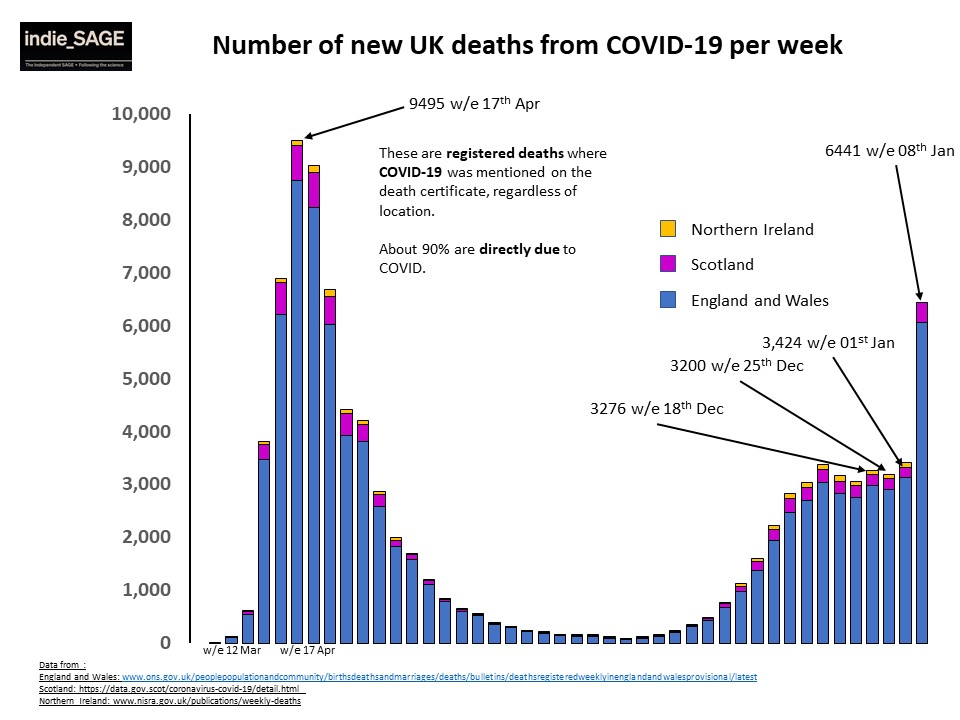A thread on the current death data and how we can interpret this in comparison to the first wave, with slides from the @IndependentSage briefing.
We saw headline-making, record numbers of reported daily deaths (within 28 days of a positive covid test) this week - 1820 on Weds.
We saw headline-making, record numbers of reported daily deaths (within 28 days of a positive covid test) this week - 1820 on Weds.
There are issues due to the weekly fluctuations. Monday saw just (just!!!) 600 deaths reported.
The reporting artefacts mean its more consistent to look at deaths by date of death.
However, "reported-by" is the most up-to-date and the metric we've been using from the start.
The reporting artefacts mean its more consistent to look at deaths by date of death.
However, "reported-by" is the most up-to-date and the metric we've been using from the start.
Looking by date of death gives a much smoother picture with fewer fluctuations, which means is is more comparable day to day.
We are averaging over 1000 deaths a day at the moment (again 28 days since a COVID test). The average never went over 1000 a day in the first wave....
We are averaging over 1000 deaths a day at the moment (again 28 days since a COVID test). The average never went over 1000 a day in the first wave....
... That said, the 28-day metric doesn't mean the same thing now as is did then.
We weren't testing as much then as we are now, so many deaths will have been missed by this metric in the first wave.
A large proportion of people who died will not have had a test beforehand.
We weren't testing as much then as we are now, so many deaths will have been missed by this metric in the first wave.
A large proportion of people who died will not have had a test beforehand.
A fairer comparison between waves is to look at deaths registered on death certificates. These data are quite delayed as it take time to gather the information, but they are probably the gold standard when it comes to measuring covid deaths.
The registered death data shows clearly that the peak of the first wave was more deadly than any week in the second wave has been so far.
9495 deaths were recorded in the week up to 17th April.
Latest data (deadliest week in the second wave) suggests 6441 deaths.
9495 deaths were recorded in the week up to 17th April.
Latest data (deadliest week in the second wave) suggests 6441 deaths.
This will increase in coming weeks, but probably won't reach the highs of the first wave.
However, the second wave has been much broader than the first, so overall we have seen more deaths in this second wave.
However, the second wave has been much broader than the first, so overall we have seen more deaths in this second wave.
I want to finish by saying that I feel callous talking about deaths like they are an exercise in statistics.
Each one of these deaths corresponds to a real person whose loved ones are devastated and grieving for them.
It's unacceptable that there have been so many.
Each one of these deaths corresponds to a real person whose loved ones are devastated and grieving for them.
It's unacceptable that there have been so many.

 Read on Twitter
Read on Twitter








